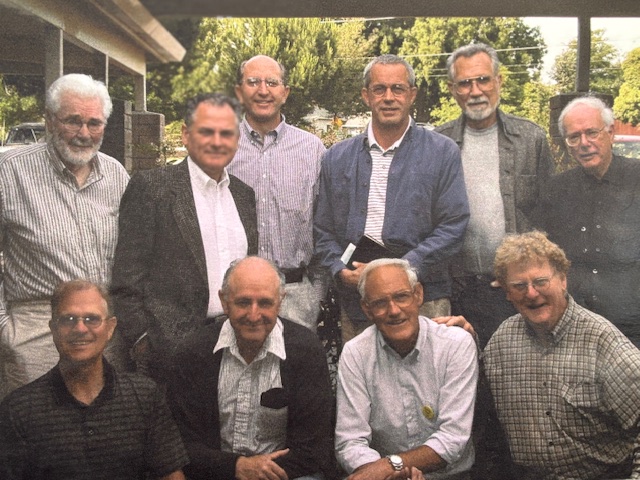
Among the manifold blessings of my life, I especially treasure one that fell upon me in 1988 while attending San Francisco Theological Seminary. In those long-ago days David McCracken served as minister at the Congregational Church over on Spain Street, and quickly became a friend and mentor to me. It happened that David met every Thursday morning with all the pastors of Sonoma’s “main line” churches for two hours of Bagels and B.S. and Bible study. A Methodist, an Episcopalian, a Lutheran, a Catholic, a Presbyterian, and a Congregationalist shared fellowship and friendship and serious theological study in the best and sweetest sense of ecumenism.
McCracken asked the brethren to invite a rookie, me, into the fellowship. Oddly, wonderfully, they concurred. Thirty seven years have since trickled by. Members have died. Members have moved away. Alan Piotter kicked the whole thing off five decades ago with two of his clergy pals, now gone. So Alan is #1 in the seniority order, and I have survived as his #2. The cast of characters has changed; the disclosure, the camaraderie, the serious purpose have prevailed. What a blessing.
In recent months we brothers have chafed and fretted and lamented over the current miasma in our nation’s capital. We (now) seven all came of age in the years after World War II, so we know in intimate detail what ensued after the people of Germany elected Adolph Hitler their Chancellor in 1933. An unchecked maniac generated the worst human catastrophe in human history. Those few clergy who resisted him spent the last seconds of their lives hanging from a noose.
After many months of Thursday-morning hand wringing, we seven decided, Doggonit, we have to Do Something. And so, every Sunday at five p.m. we circle up, with spouses and friends and flickering candles, on Sonoma’s historic Plaza, behind a banner that reads, Bring Back Democracy.
Yeah, it ain’t much. It’s just . . . Something.
